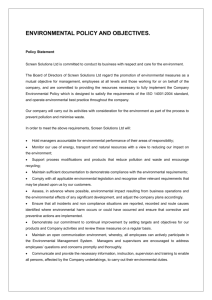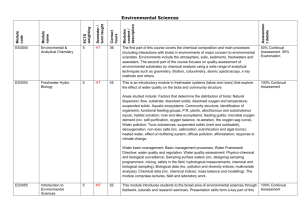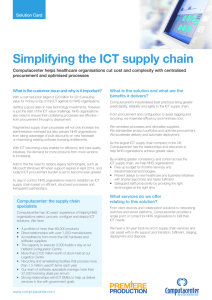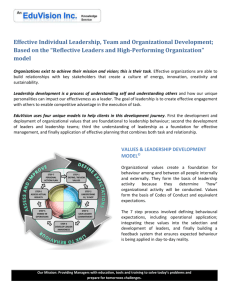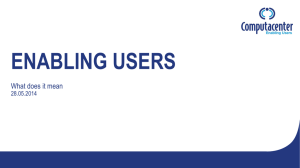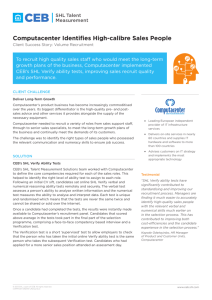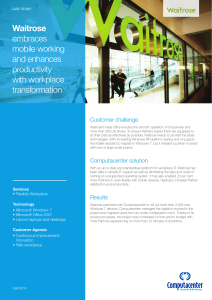Don`t take service delivery at face value
advertisement
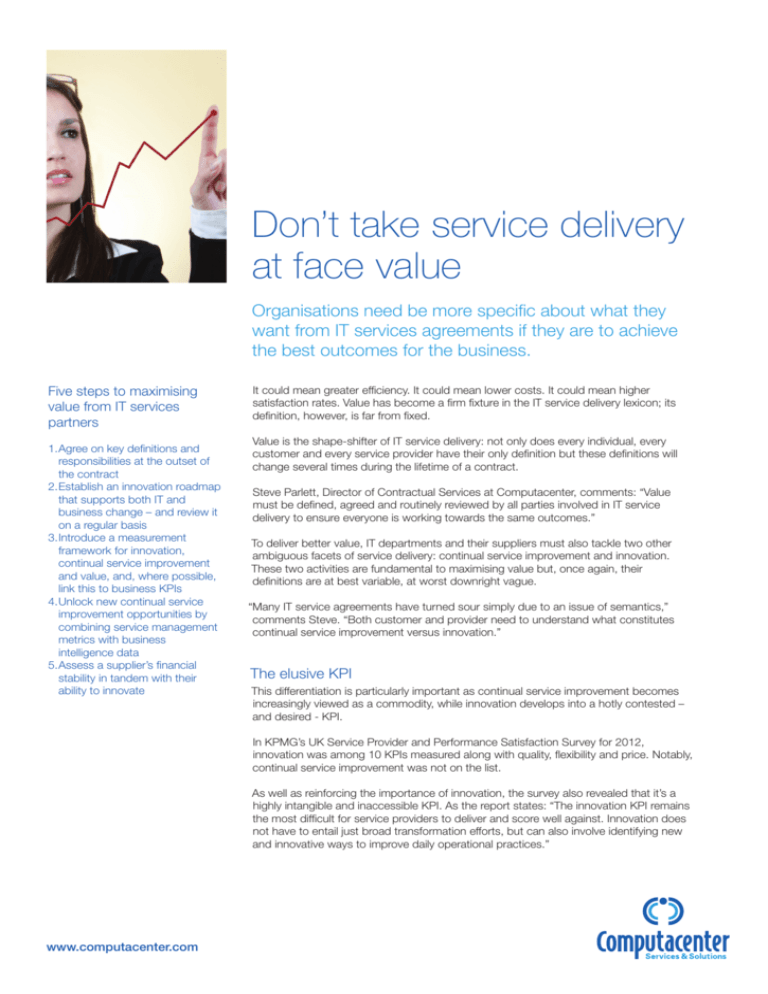
Don’t take service delivery at face value Organisations need be more specific about what they want from IT services agreements if they are to achieve the best outcomes for the business. Five steps to maximising value from IT services partners 1.Agree on key definitions and responsibilities at the outset of the contract 2.Establish an innovation roadmap that supports both IT and business change – and review it on a regular basis 3.Introduce a measurement framework for innovation, continual service improvement and value, and, where possible, link this to business KPIs 4.Unlock new continual service improvement opportunities by combining service management metrics with business intelligence data 5.Assess a supplier’s financial stability in tandem with their ability to innovate It could mean greater efficiency. It could mean lower costs. It could mean higher satisfaction rates. Value has become a firm fixture in the IT service delivery lexicon; its definition, however, is far from fixed. Value is the shape-shifter of IT service delivery: not only does every individual, every customer and every service provider have their only definition but these definitions will change several times during the lifetime of a contract. Steve Parlett, Director of Contractual Services at Computacenter, comments: “Value must be defined, agreed and routinely reviewed by all parties involved in IT service delivery to ensure everyone is working towards the same outcomes.” To deliver better value, IT departments and their suppliers must also tackle two other ambiguous facets of service delivery: continual service improvement and innovation. These two activities are fundamental to maximising value but, once again, their definitions are at best variable, at worst downright vague. “Many IT service agreements have turned sour simply due to an issue of semantics,” comments Steve. “Both customer and provider need to understand what constitutes continual service improvement versus innovation.” The elusive KPI This differentiation is particularly important as continual service improvement becomes increasingly viewed as a commodity, while innovation develops into a hotly contested – and desired - KPI. In KPMG’s UK Service Provider and Performance Satisfaction Survey for 2012, innovation was among 10 KPIs measured along with quality, flexibility and price. Notably, continual service improvement was not on the list. As well as reinforcing the importance of innovation, the survey also revealed that it’s a highly intangible and inaccessible KPI. As the report states: “The innovation KPI remains the most difficult for service providers to deliver and score well against. Innovation does not have to entail just broad transformation efforts, but can also involve identifying new and innovative ways to improve daily operational practices.” www.computacenter.com With such ambiguity about what can be classified as innovation, it’s not surprising that suppliers are struggling to deliver. Even though Computacenter took the number one slot for innovation in KPMG’s 2012 survey, its score was a modest 65 per cent.2 “We have listened to our customers and have taken a number of steps to enable us to meet their innovation expectations,” comments Steve. “However we recognise, we need to do more and have a number of initiatives underway for this year.” Keeping score The demand for innovation is likely to continue as KPMG observes: “Innovation has increased in importance over the past few years as buyers look beyond just cost savings as a reason to pursue or expand outsourcing efforts.”2 To meet this demand, Gartner recommends that organisations: “Incorporate definitions, processes and ways to measure the level of innovation in outsourcing deals.”1 Computacenter has taken this one step further and applied this approach to continual service improvement, innovation and value via its unique Customer Value Scorecard. As Rik Hawke, who heads up the company’s Continual Service Improvement team, explains: “The scorecard helps us establish what matters to each customer - from results and relationships to quality and people. This enables us to focus on delivering the innovations and improvements that match their specific value goals.” The Customer Value Scorecard has helped Computacenter achieve excellent levels of satisfaction across its client base. In KPMG’s 2012 survey, Computacenter achieved the highest customer satisfaction rating out of 25 UK IT service providers. Industrialising innovation Although defining value and innovation is an important first step, organisations also need to accelerate the time to value. As Rik confirms: “Organisations are increasingly opting for shorter term contracts, which means both the IT department and the service provider need to be able to deliver improvements and innovations in a tighter timeframe if they are to prove value.” To help its customers achieve their goals faster, Computacenter has taken an industrialised approach to innovation and improvement. “We have collated a massive library of ideas and solutions that have already delivered value to our customers,” comments Rik. “Our goal is to match these initiatives to other organisations with similar challenges and goals to help accelerate change and remove both cost and risk.” Such a repeatable approach to innovation and continual service improvement could prove key, with Gartner recommending that organisations’ sourcing managers “rely on strategic suppliers to bring forward new IT ideas to solve business problems”.1 As this reliance increases, organisations will find the need for common definitions intensifies. “Value can’t be measured unless it has set parameters,” comments Steve. “With both IT departments and service providers coming under increasing scrutiny from business stakeholders, we need to get smarter about how we define, demonstrate and deliver not just value but also innovation and continuous improvement.” 1 Outsourcing Trends 2013: Growing IT Impact on the Business Drives New Sourcing Decisions, Gartner, February 2013 2 UK IT Service Provider Performance and Satisfaction Survey 2012, KPMG
